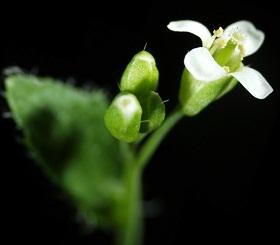Using AI to control energy for indoor agriculture
30 September 2024
Published online 18 September 2011

Flowering plants respond to the onset of spring by sending signals through nutrient-transporting phloem tubes to the shoot tips, triggering the plant to sprout a flower.
A research team led by Yiguo Hong of Hangzhou Normal University and the University of Warwick, including Toba Osman from Fayoum University, Egypt, has identified one component of this "florigen" signalling mechanism.
In Arabidopsis, the FLOWERING LOCUS (FT) protein plays a major role in the transmission of this signal. The FT protein is also a component of the flowering signal in rice and tomato plants.
The researchers used novel plant virus technology to demonstrate that FT messenger RNA is transported all the way into the shoot apical meristem.
RNA silencing, the process by which gene expression is suppressed by blocking the action of RNA, prevents Potato Virus X (PVX) from infecting the shoot apex but not other parts of the plant. The researchers exploited this by creating genetically engineered PVX constructs and introduced them into Nicotiana benthamiana, a close relative of the tobacco plant, which was also engineered to express green fluorescent protein (GFP).
The PVX fused to transcripts of FT and the GFP gene spread into the shoot apex of growing leaves, where the GFP transcripts generated from the construct blocked endogenous GFP expression. By contrast, PVX fused to GFP alone did not enter the shoot apex, and GFP expression remained strong in the apex and leaves.
These experiments showed that only PVX constructs containing the FT transcript were transported into the shoot apex.
The researchers also found that FT messenger RNA played a role in the signal that induces the growth of flowers.
"Mobile RNA signalling in floral induction has not been described before," says Hong. "We have demonstrated that FT mRNA may be one component of the signal. Another obvious component is FT protein, and we are now planning to dissect the signalling complex."
doi:10.1038/nmiddleeast.2011.123
Stay connected: